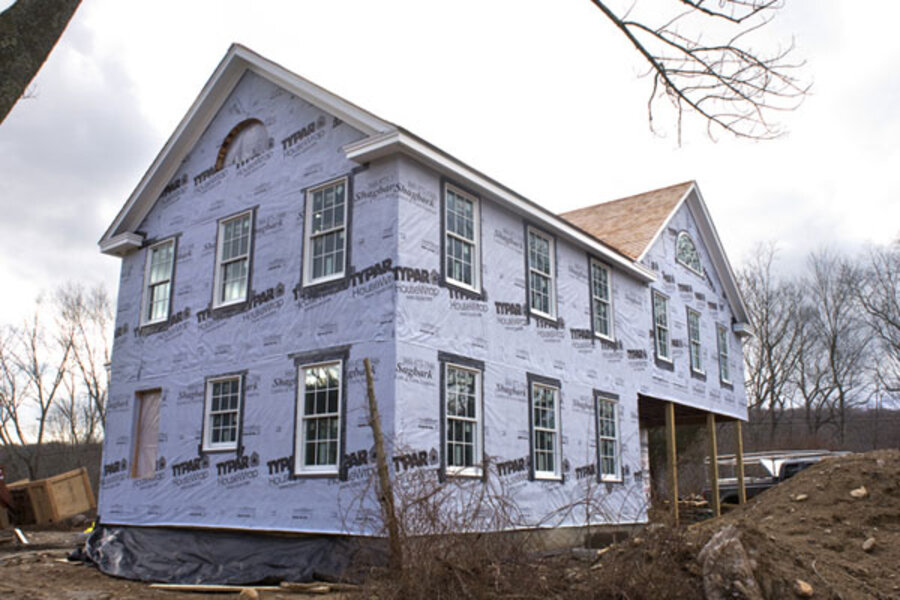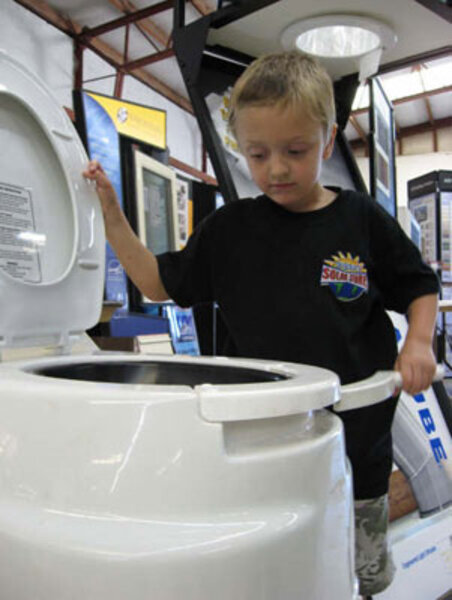Composting toilets: plenty of advances but some problems remain
Loading...
In my past few posts about the eco-economical renovation of Sheep Dog Hollow, I’ve written (rather uncomfortably) about the benefits and problems of low flow toilets and disregarded, almost completely, the composting variety.
Chalk it up to a sign of my still-antediluvian green consciousness, memories of camp outhouses, or maybe fear of what’s perceived as “extreme green.”
But as a result of several people who commented on the most recent post, I realized I was remiss.
One was Marsha who asked simply: “What about waterless toilets?”
Another was Millie, who shared her firsthand experience: “We have used a composting toilet and found it satisfactory. We had one with a heater and a circulating fan. Since we live in the Southwest we had to add water to aid the process. The compost was great on trees and shrubs.”
Being a gardener of sorts, that piqued my interest. It turns out that just as great strides have been made in low-flow toilets, so, too, have advances been made in the composting variety.
But some problems with them are obvious, such as the perception that they're “smelly” and a general societal shying away from the whole idea.
Other problems are more concrete, such as regulatory barriers – some states won’t allow them if a sewer system is available – and the possible impact on the resale value of a home and its potential financing, according to Sustainable Sources.
Since I really hadn’t thought seriously about them before, I had to start from the beginning – attacking my own discomfort while trying to understand how they work.
The site Composting Toilet World was way ahead of me in noting the uncomfortable memories associated with what they call “old pit (outhouse) toilets.”
That still didn’t quite answer my questions about exactly how they worked, so I checked out its FAQ page, which adds:
Actually, there is a range of composting toilets – from simple, self-contained units to centralized systems, complete with roof venting systems, one-pint flush mechanisms, and basement waste collectors.
The costs can also range from a few hundred to several thousand dollars, and that doesn’t include installation. The more I researched the topic, the more surprised I was by how technology has taken up the composting challenge and produced many options.
But then there’s the obvious question of whether they smell and how much work they require.
Most of the sites I found insist a properly installed and properly operated composting toilet will not smell. The Composting Toilet Store goes even further. Its motto is “No Septic. No Plumbing. No Odor. No Problem." It also says"
That makes it sound as though we all should be racing to buy one. But most sites, such as LetsgoGreen.com, also put in a caveat, like this: “The correct balance between oxygen, moisture, heat and organic material is needed to ensure a rich environment for the aerobic bacteria that transform the waste into fertilizing soil. This ensures odor-free operation and complete decomposition of waste.”
That clearly implies that it takes some work and vigilance to ensure that odor’s not a problem. A testimonial on the same site made that very clear: “I put cedar closet boards behind the unit to help control possible odors/insect problems ...”
So odor can be a problem, despite what many manufacturers and advocates contend. I found the most honest analysis at the Natural Building Colloquium Southwest site:
Part of that maintenance requires ensuring there’s no liquid build-up in the compost system, according to the site Gardenguides:
There’s also the issue of dealing with the finished compost once it’s ready to spread on your bushes and shrubs (it’s not recommended for edible plants.) Some sites note that it’s important to wear gloves and ensure that the compost is moist when it’s removed, so you don’t inhale its dust.
That’s just one of the issues Garden Guides found:
So, despite all of compost toilets’ environmental advantages – from their use of little or no water, to the fact you don’t need a septic tank, a sewer, or treatment plants, to the production of good compost – I’m not ready to take the plunge, as it were.
Nope, at Sheep Dog Hollow we’re going with traditional low-flow water toilets. There are High Efficiency Toilets (HET) options, which use 20 percent less than the legally mandated low-flowers. I’m currently checking those out.
In the meantime, I found the best buying guide for low flowers at the Green Building Council’s “5 Tips for Choosing a Low Flow Toilet.” It’s a “must read” if you’re thinking about cutting down on your water usage but like me, still aren’t quite green enough to go for a composter.
Next: Reconsidering solar.
Editor’s note: Alexandra Marks blogs twice a week – usually on Tuesdays and Thursdays – about her green and budget-friendly restoration of a 1902 farmhouse in Connecticut. Click here to find all her blog posts and articles.
Alex is currently working on nonfiction book about the green renovation of Sheep Dog Hollow. She is also writing a fictional account. At this point, she’s not sure whichwill have the happy ending. Before this project, she worked for The Christian Science Monitor for most of the past 20 years, covering everything from healthcare to politicians.






